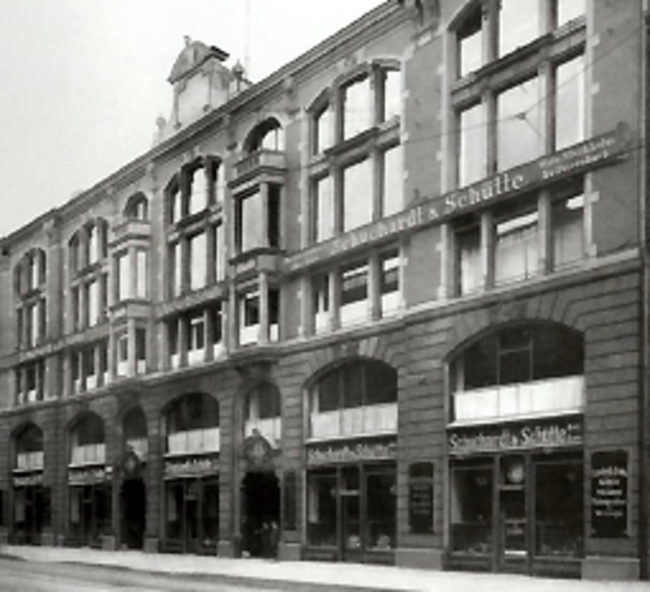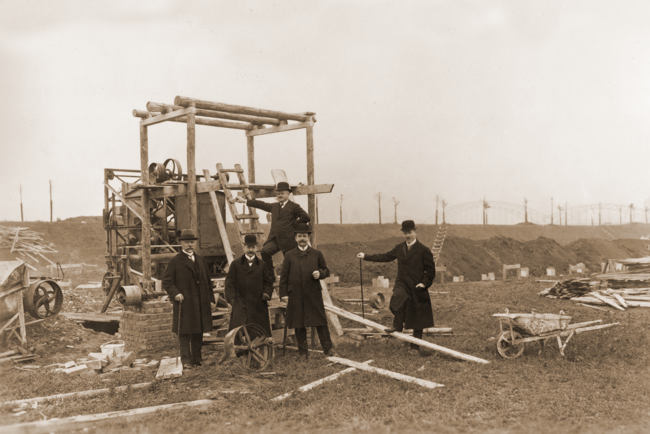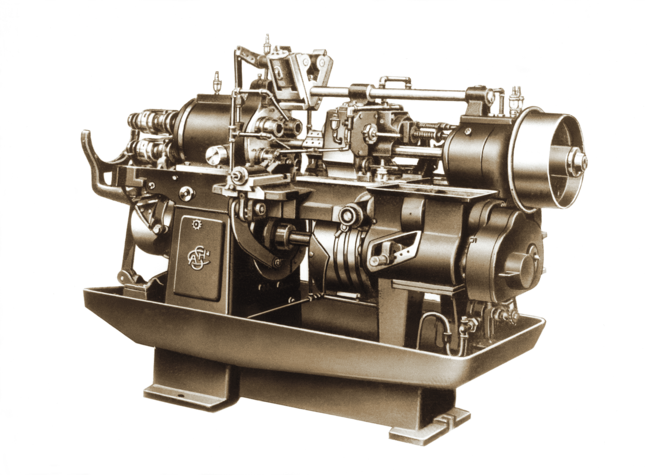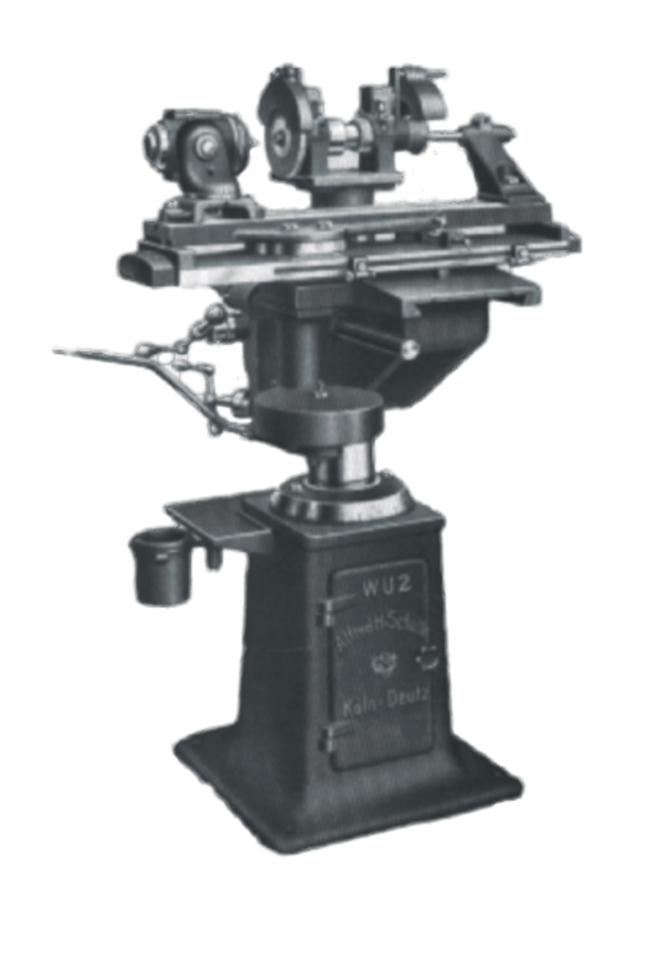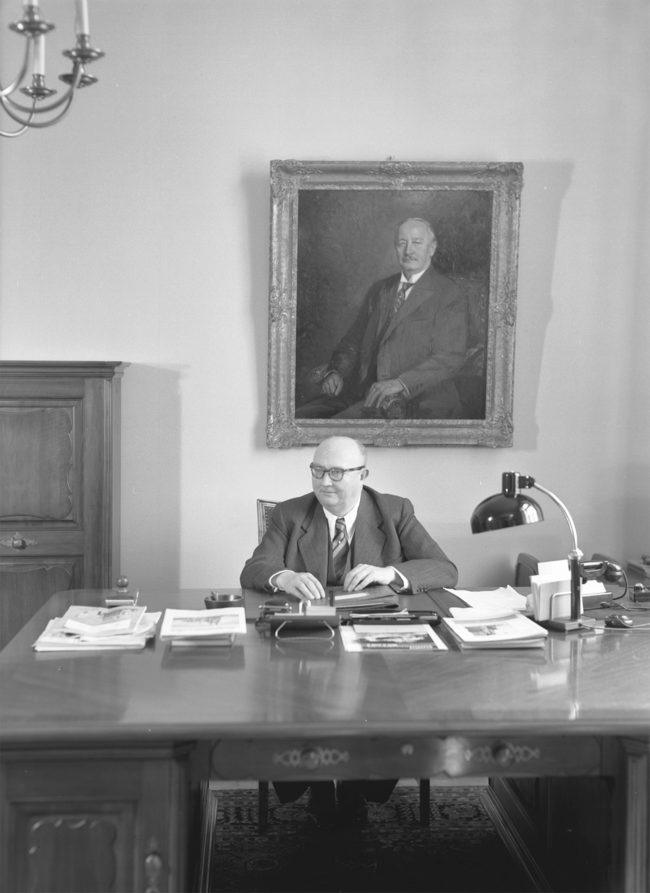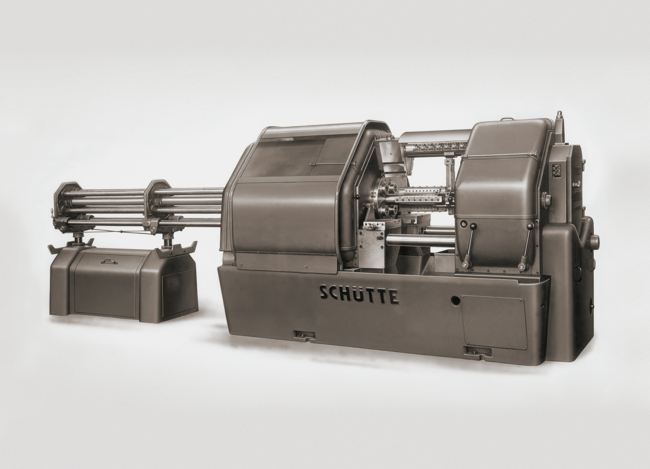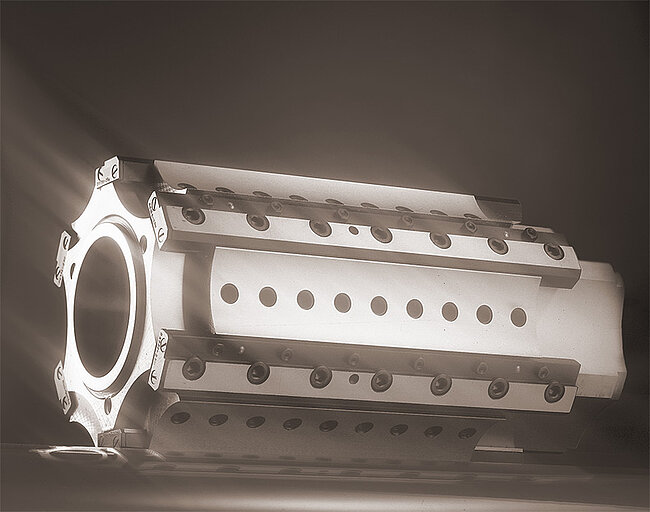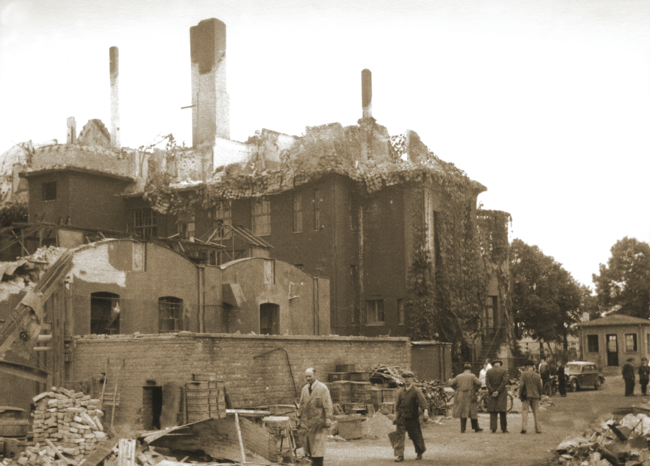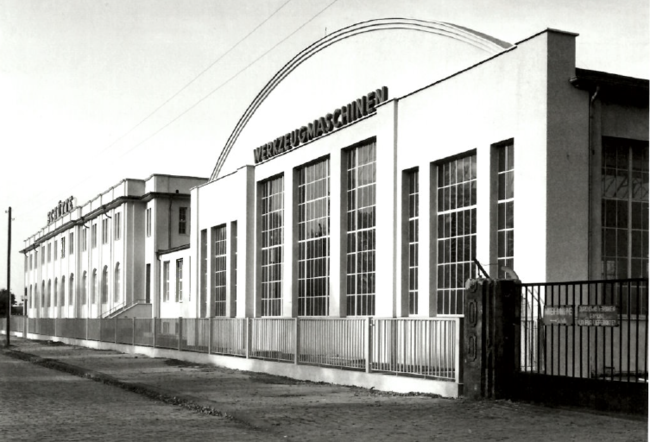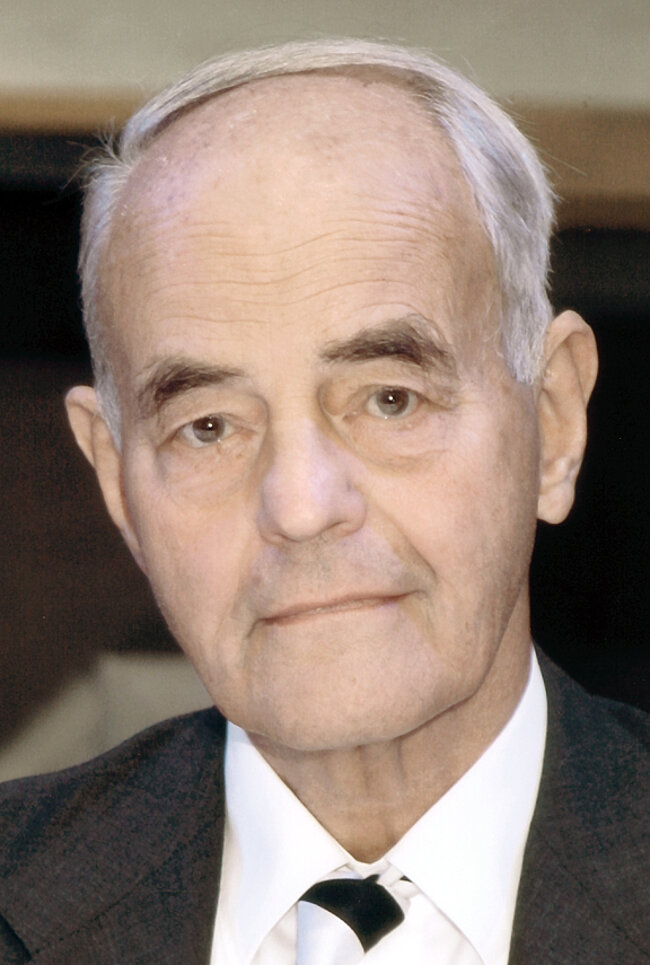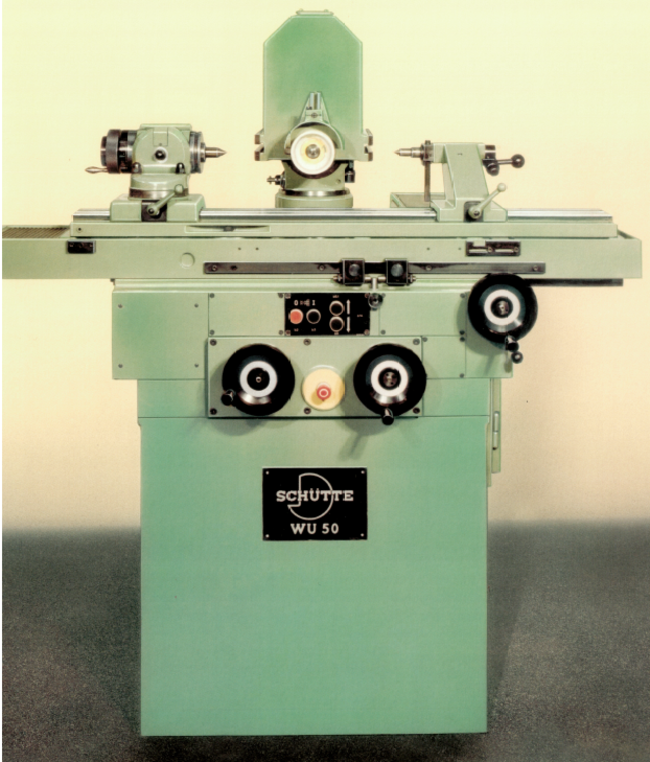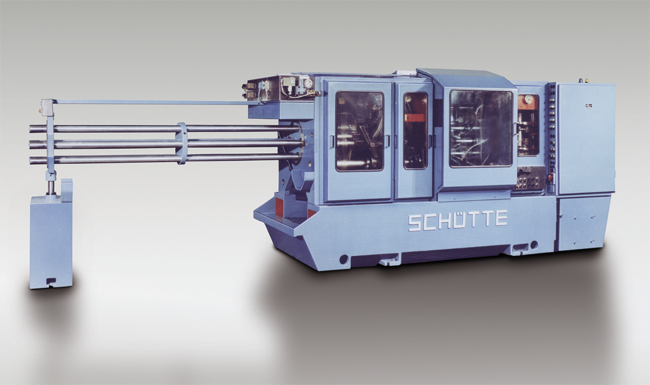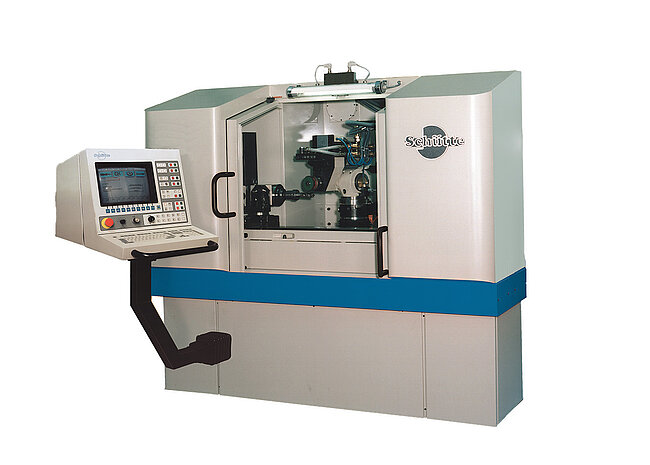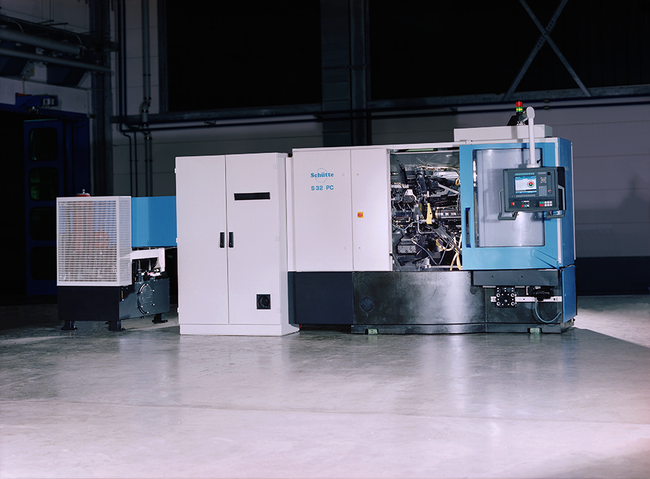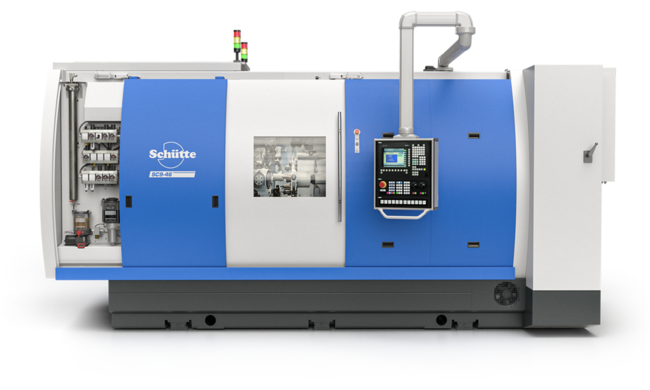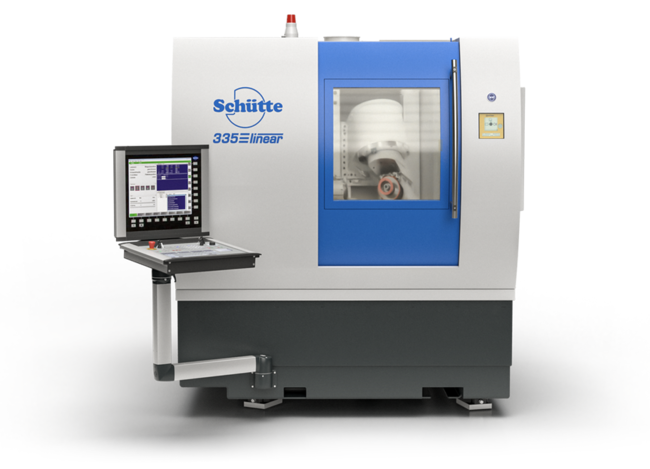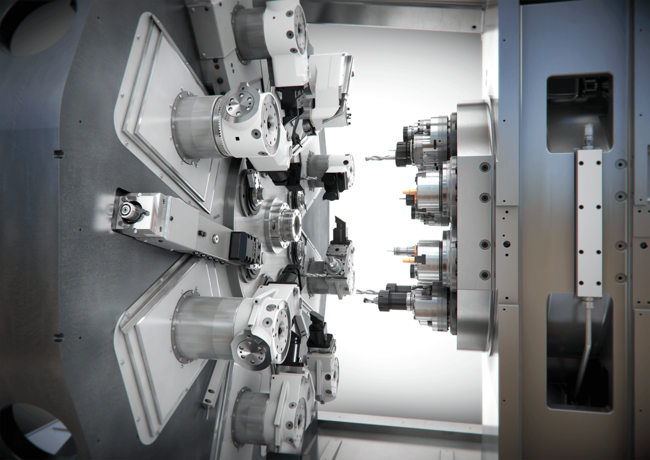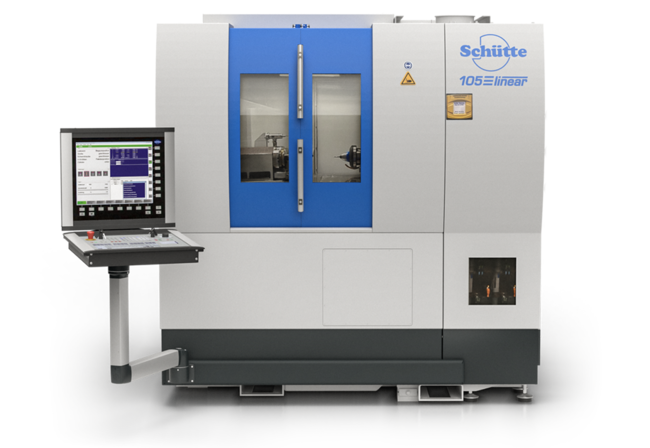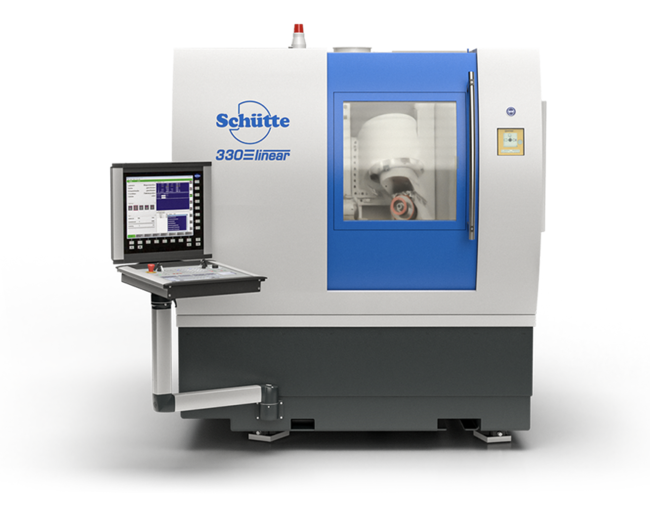-
1993
The great-grandson of the company founder, Carl Martin Welcker, takes over management of the company.
-
1993
Participation in Gosho
New construction of the production hall on the eastern side for large part machining
-
1995
Schütte präsentiert mit dem CNC Sechsspindel Drehautomat SC32 PC- den ersten CNC gesteuerten Mehrspindler auf Grundlage der BAUART SCHÜTTE sowie den schnellsten Schütte Sechsspindel-Drehautomat SG18 der Baureihe „G“
Schütte presents the CNC six-spindle automatic S 32 PC - the first CNC controlled multi-spindle automatic based on the SCHÜTTE DESIGN as well as the fastest Schütte six-spindle automatic, the SG 18 of the "G" series.
-
1996 - 1998
Foundation Schütte USA
Foundation Schütte France
-
1999
The EMO in Paris sees the launch of the new grinding machine in the 305 series
The method of simultaneous changing of grinding wheels and coolant adapters for grinding machines is patented.
-
2000 - 2003
Foundation Schütte Italy
Foundation Schütte China
-
2003
Based on the PC machine, Schütte introduced the first fully CNC-controlled six-spindle automatics with digital motor spindles.
-
2005
125-years comany anniversary
Patents for concentric runout and drum compensation
-
2006
Introduction of the SCX series - a new multi spindle concept without "Schütte Block" and with new machining stations - a multi machining centre ( The main features: six spindles for the front side and 3 spindles for second-side machining).
-
2010
Introduction of the Schütte Grinding Software SIGSpro.
-
2012
Introduction of the new grinding machine series 325linear
-
2017
Introduction of the new grinding machine series 335linear
-
2018
Foundation Schütte Brasilien
Introduction of the new multi spindle automatics (eight spindles) ACX
-
2019
Entry in the single spindle market with the ECX series for small and medium lots.
-
2020
Introdution of the grinding machine series 105linear
-
2021
Introduction of the grinding machine series 330linear

